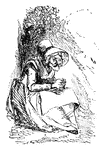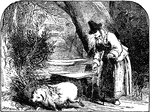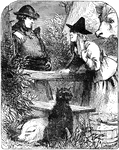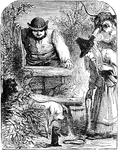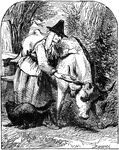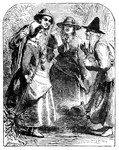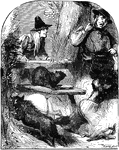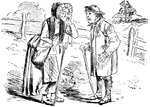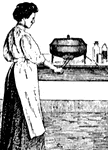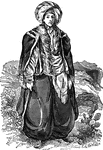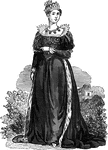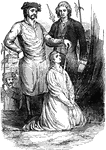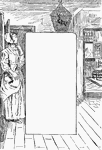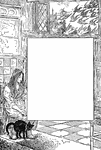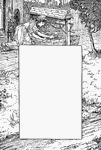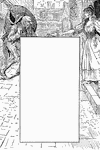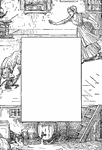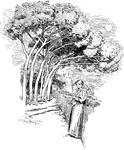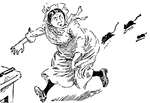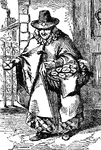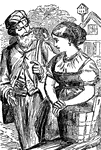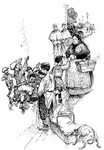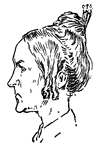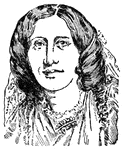
George Eliot
(1820-1880) George Eliot is the literary name assumed by Marian Evans, who was a novelist.

Pippin Hill
"As I was going up Pippin Hill, Pippin Hill was dirty. There I met a pretty miss, And she dropped me…
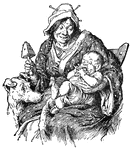
Mother with Her Baby
A giant in Brobdingnag with her baby. The baby trying to stick Gulliver in his mouth.
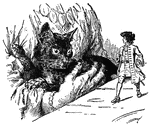
Gulliver and Giant Cat
Gulliver on a dinning table, with the giants of Brobdingnag, looking at a very large cat.

Queen looking in a mirror
The Queen of brobdignag quickly becomes fond of Gulliver. She holds him in her hand showing him around…

Testing Milk
A woman putting milk into a test bottle. The pipette is held at an angle with the test bottle and its…
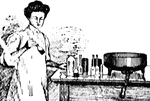
Mixing Milk
A woman mixing milk with acid to test it, using a rotary motion with the bottle not pointed towards…
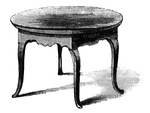
Treaty Table
The Treaty Table. The table on which the capitulation was drawn up and signed was still in possession…
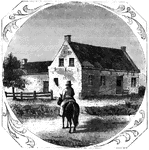
Vankleek House
The Vankleek House. It was built by Myndert Vankleek, one of the first settlers in Dutchess county,…
![The Yeoman House. This view is from the road, looking north. An attempt was made by a soldier to burn the house, but so rapid was the march of the invaders that the flames had made but little progress before the troops were far on their road to the village. An [African American] woman, who was concealed under some corn-stalks near, extinguished the flames. The house is about half a mile from the river, on the right side of the road from the landing to Kingston village.](https://etc.usf.edu/clipart/13500/13510/yeoman_13510_mth.gif)
Yeoman House
The Yeoman House. This view is from the road, looking north. An attempt was made by a soldier to burn…

Walnut Street Prison
"The Walnut Street Prison. This edifice was erected in 1774, and taken down in 1836. The beautiful new…

17th Century French Fan
"A Fan is an instrument used by ladies to agitate the air, and cool the face, in warm weather; hence,…

18th Century Spanish Shell Fan
"A Fan is an instrument used by ladies to agitate the air, and cool the face, in warm weather; hence,…

Chirodota
"A tunic with sleeves. The tunic of the Egyptians, Greeks and Romans was originally without sleeves,…
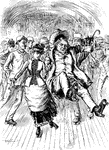
Roller Skating
A group of people rollerskating indoors. The man in front is about to fall. All of the people are wearing…
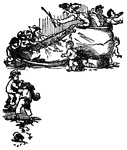
Shoe
There was an old woman who lived in a shoe; She had so many children she didn't know what to do; She…
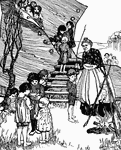
She Lived in a Shoe
There was an old woman who lived in a shoe; She had so many children she didn't know what to do; She…
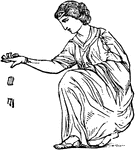
Talus
"Talus. The huckle-bones of sheep and goats were used to play with from the earliest times, principally…
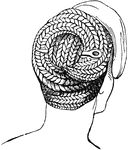
Platted hair
"The mode of platting the hair, and then fastening it with a pin on a needle, is shown in the annexed…
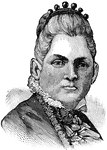
Mrs. John A. Logan
Widow of the late General John A. Logan. She assisted her husbant and his soldiers during the war.

Frances Elizabeth Willard
Frances Elizabeth Caroline Willard was an educator and women's suffragist. She was president of the…

